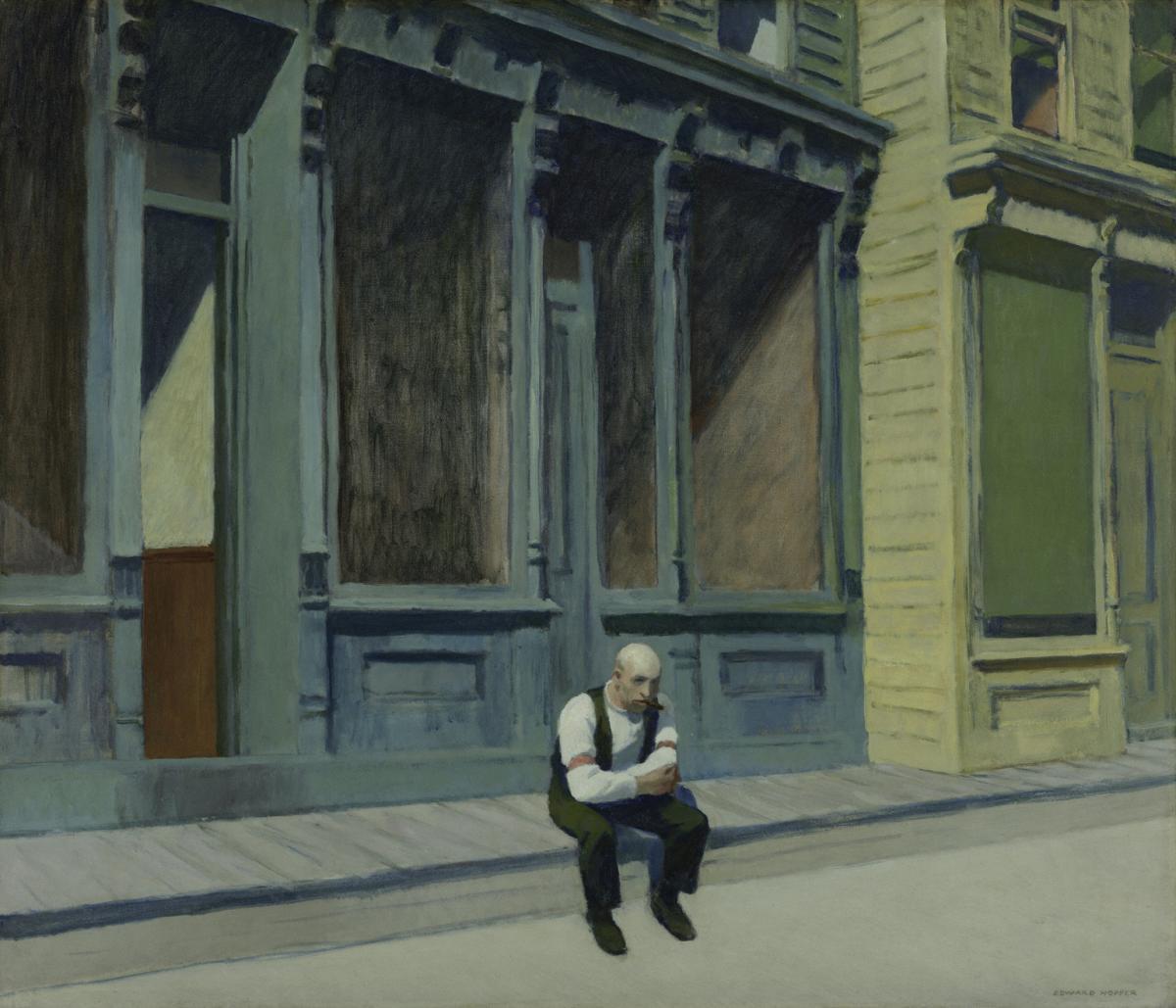Sunday
Edward Hopper ( 1926 )

Sunday is characteristic of Hopper’s vision of twentieth-century America. At first commonplace, his art has unexpected resonance, showing the significant rather than the beautiful. The interplay between particular and generalized components, an ongoing aspect of Hopper’s work, contributes to the work’s vitality, making it at once familiar and unfamiliar.
Hopper’s art conveys the realities of the human condition genuinely and truthfully. Images such as Sunday provided visual form to prevailing states of mind—often of unfulfilled longing or nostalgia—in the United States. Hopper’s most influential teacher, Robert Henri, had already explored subjects inspired by contemporary experience, but Hopper’s work is sharper and tougher than Henri’s. Finding most American Scene art sentimental and obvious, Hopper disliked being identified as a proponent of the movement. By the 1920s, however, his art dealt exclusively with American subjects.
During 1926, the same time in which Sunday was executed, America was experiencing the early effects of the Great Depression. This work illustrates the national anxiety and disillusionment of the later part of the decade. Hopper’s characteristic style reveals the essential isolation of the individual, the troubled relationships and tensions within the environment.
Sunday depicts a spare street scene. In the foreground, a solitary, middle-aged man sits on a sunlit curb, smoking a cigar. Behind him is a row of old wooden buildings, their darkened and shaded windows suggesting stores, perhaps closed for the weekend or permanently. Oblivious to the viewer’s gaze, the man seems remote and passive. His relationship to the nearby buildings is uncertain. Who is he? Is he waiting for the stores to open? When will that occur? Sunlight plays across the forms, but curiously, it lacks warmth. Devoid of energy and drama, Sunday is ambiguous in its story but potent in its impression of inertia and desolation
.Duncan Phillips was the first to point to contrasting content in the work: “The grim scene is just as we remember it, only more so. The light conveys the emotion which is a blend of pleasure and depression—pleasure in the way the notes of yellow, blue-green, gray-violet and tobacco-brown take on a rich intensity in the clear air—and depression induced by this same light and these same colors as we sense them through the boredom of the solitary sitter on the curb …. Hopper defies our preconceptions of the picturesque and unflinchingly accepts the challenge of American subjects which seem almost too far beyond the scope even of the realistic artist’s alchemy.”